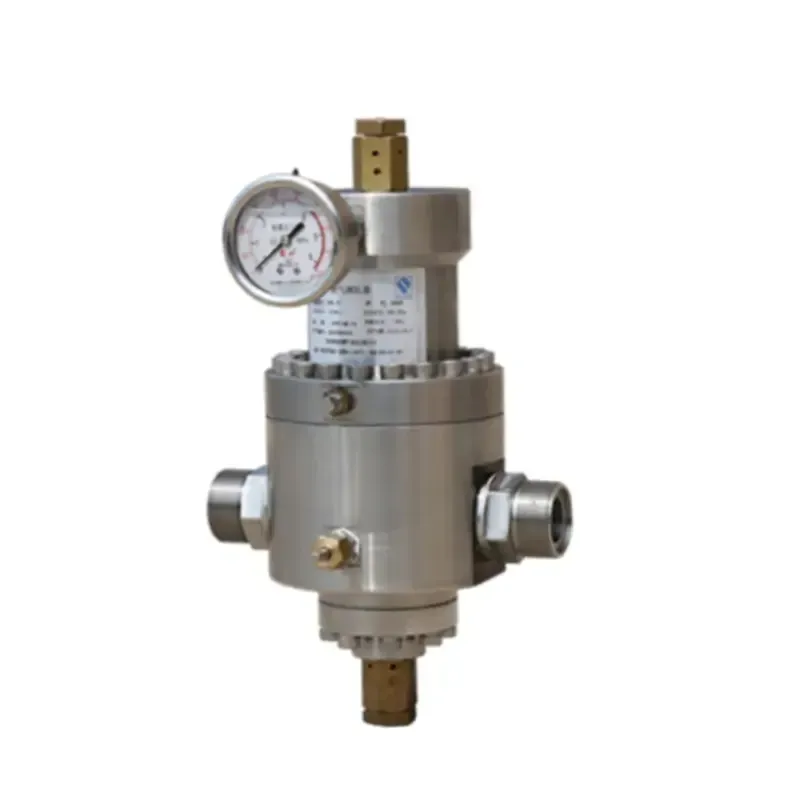
Dec . 01, 2024 03:04
Back to list
Gas Pressure Regulation Station for Safe and Efficient Distribution System Management
Gas Pressure Reducing Stations An Essential Component of Natural Gas Infrastructure
Gas pressure reducing stations (PRS) are critical components of the natural gas distribution network. These stations ensure that natural gas delivered to consumers is at a safe and usable pressure, thus playing a vital role in the overall efficiency and safety of gas supply systems. In this article, we will explore the functions, design, and importance of gas pressure reducing stations in the context of energy distribution.
Functionality of Gas Pressure Reducing Stations
Natural gas is transported through pipelines at high pressures to minimize losses due to friction over long distances. However, when this high-pressure gas reaches the end-users—such as homes, businesses, and industrial facilities—it must be reduced to a lower, more manageable pressure level. This is where gas pressure reducing stations come into play.
The primary function of a PRS is to lower the high pressure of the gas while maintaining a steady flow. This is typically accomplished using a series of valves and regulators. The stations monitor incoming gas pressure and adjust it to the appropriate level for distribution. Advanced PRS may also include telemetry systems that provide real-time data to operators, allowing for remote monitoring and control.
Design and Components
A well-designed gas pressure reducing station incorporates several key components to ensure reliability and safety, including
1. Pressure Regulators These are the heart of the PRS, automatically adjusting the gas pressure to desired levels depending on usage demands. Regulators can be set to varying levels based on the requirements of different users.
2. Safety Devices To prevent over-pressurization, PRS are equipped with safety features, including pressure relief valves that activate in the event of an abnormal pressure surge. Safety alarms and shutdown systems are also crucial in emergency scenarios.
gas pressure reducing station

3. Filtration Systems Natural gas can contain impurities and particulates that might damage equipment or disrupt service. Filtration systems within the PRS clean the gas, ensuring that only clean, dry gas is delivered to users.
4. Bypass and Isolation Valves These valves allow for maintenance without interrupting the service to consumers. They enable operators to isolate the station for repairs or upgrades while ensuring that gas flow remains uninterrupted.
5. Telemetry and Control Panels Modern stations often come equipped with digital control panels and telemetry systems, which enhance monitoring capabilities and facilitate predictive maintenance.
Importance in Natural Gas Supply
The significance of gas pressure reducing stations cannot be understated. First and foremost, they contribute to the safety of gas distribution. Operating high-pressure pipelines involves inherent risks, and reducing pressure at designated points minimizes these hazards for both operators and consumers.
Additionally, PRS enhance the efficiency of gas delivery. By ensuring that gas is supplied at the optimal pressure, they help maintain gas quality and reduce waste. Consistent pressure levels also contribute to the longevity of downstream equipment, reducing the need for costly repairs and replacements.
Furthermore, as the demand for natural gas continues to grow—driven by its role as a cleaner energy source—efficient PRS become increasingly essential. They allow for the integration of renewable energy sources and facilitate the expansion of gas networks to rural and developing areas.
Conclusion
In conclusion, gas pressure reducing stations are indispensable elements of the natural gas infrastructure. Their ability to regulate pressure ensures the safe and efficient delivery of natural gas to consumers worldwide. As energy demands continue to evolve, the importance of maintaining and upgrading these critical facilities will only grow, reinforcing their role in a sustainable energy future.
Next:
Latest news
-
Safety Valve Spring-Loaded Design Overpressure ProtectionNewsJul.25,2025
-
Precision Voltage Regulator AC5 Accuracy Grade PerformanceNewsJul.25,2025
-
Natural Gas Pressure Regulating Skid Industrial Pipeline ApplicationsNewsJul.25,2025
-
Natural Gas Filter Stainless Steel Mesh Element DesignNewsJul.25,2025
-
Gas Pressure Regulator Valve Direct-Acting Spring-Loaded DesignNewsJul.25,2025
-
Decompression Equipment Multi-Stage Heat Exchange System DesignNewsJul.25,2025

